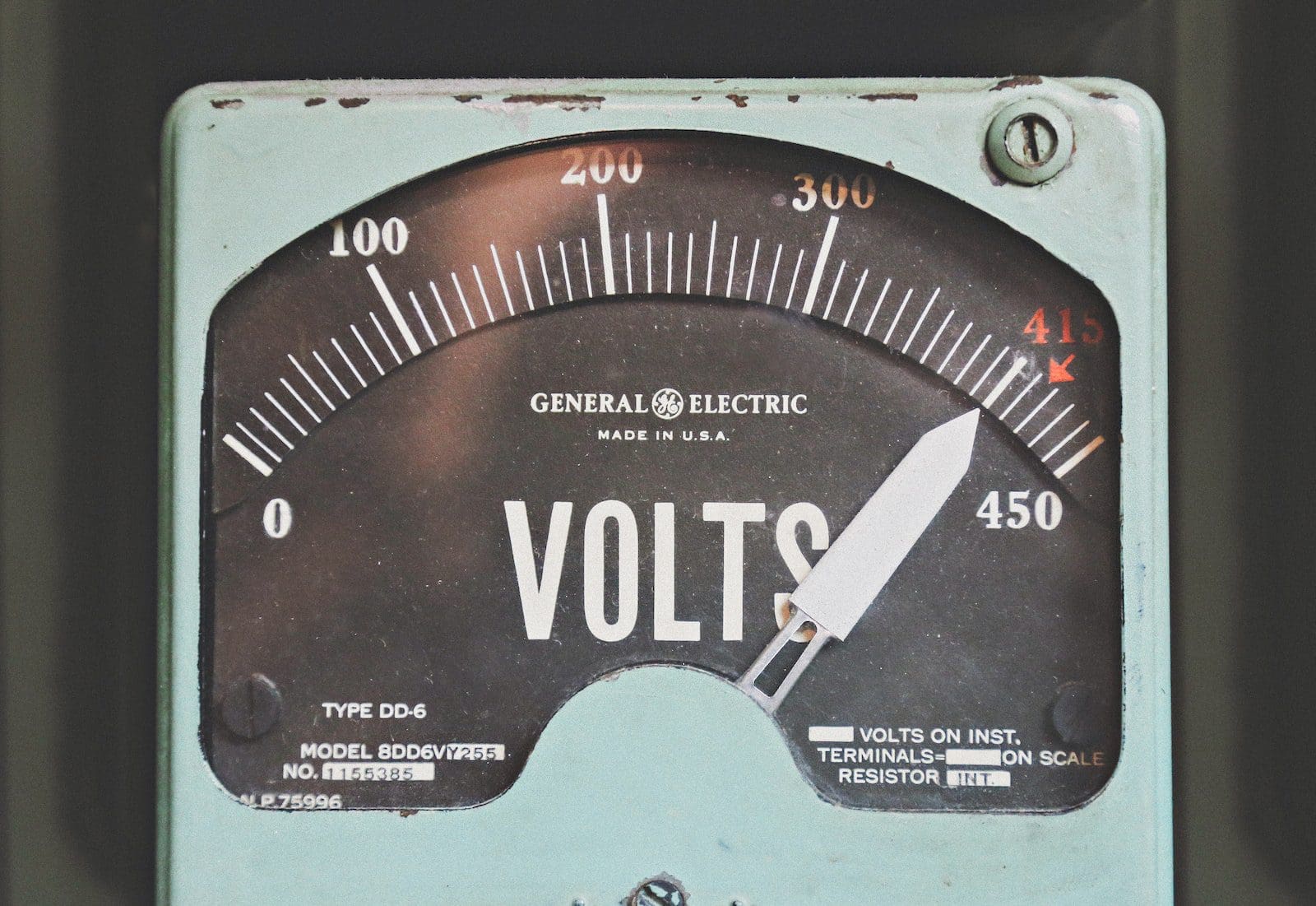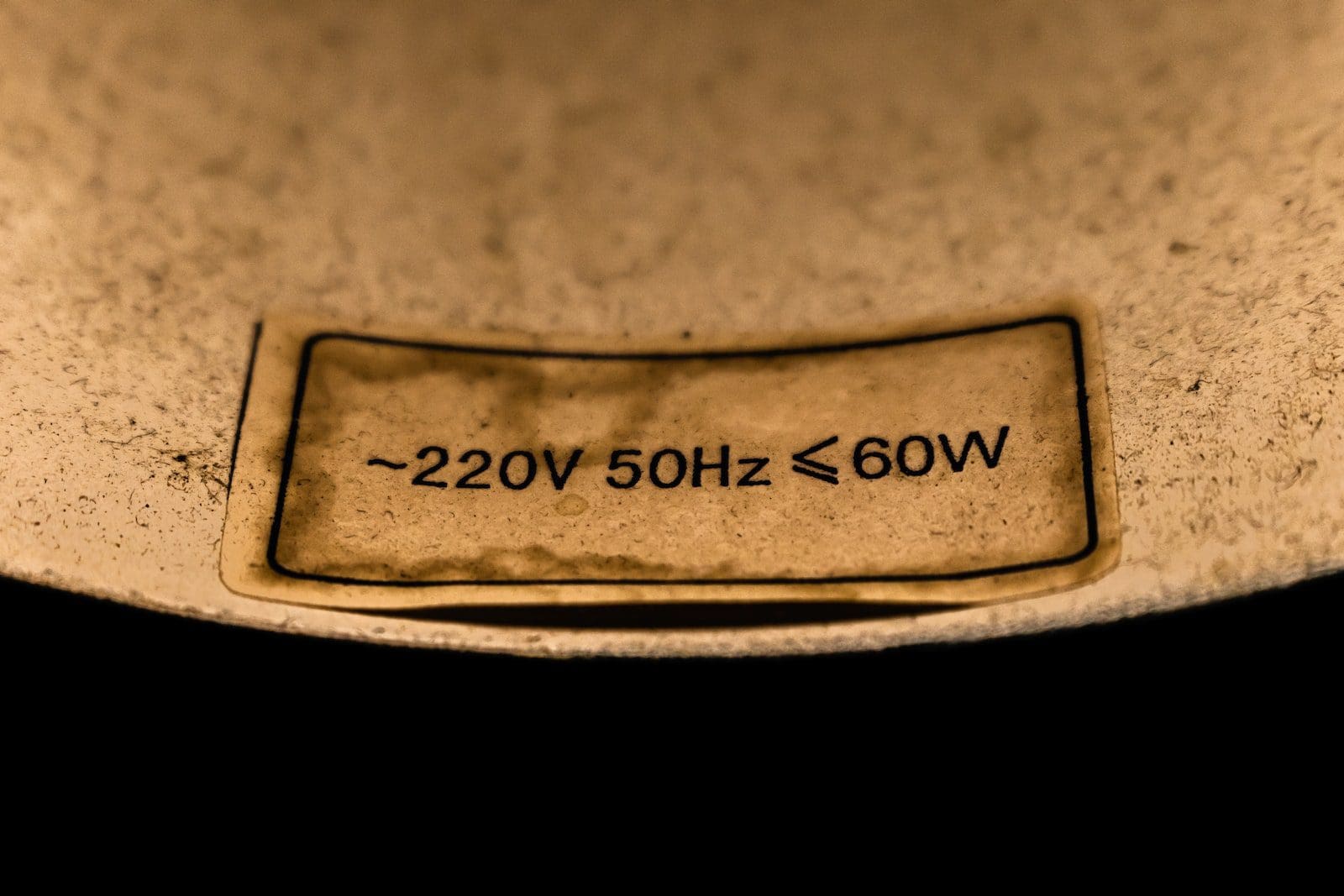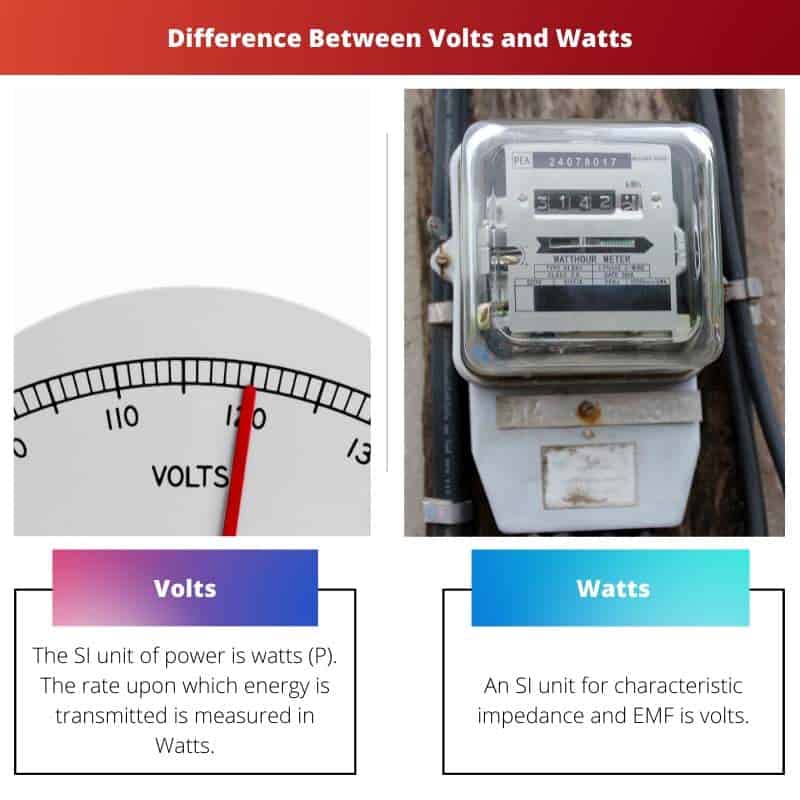There in the area of Electrical & Electronics Engineering, volts, and watts are two of the most common and used important words.
Almost all of the time, those phrases perplex newcomers or people who have already recently begun studying electrical sciences.
Despite the fact that these two words seem similar, they are not the same.
A standard measure for voltage differential is volts, whereas power is measured in watts.
Those same numbers are exclusively used throughout electric circuits to calculate the magnitude of a power source or the amount of electricity a gadget requires.
Volts and watts are connected so because the quantity of one may be calculated from the value of the other if you have another variable, such as power in amps or resistance in ohms.
Key Takeaways
- Volts are the unit of measurement for electric potential, whereas watts are the power unit.
- Volts measure the electric potential difference between two points in an electrical circuit, while watts measure the rate at which energy is transferred or used.
- A higher voltage does not necessarily mean more power, as power is determined by both voltage and current.
Volts vs Watts
The difference between Volts and Watts. A Volt is just a Si-derived unit measuring potential difference and electromotive force, although the Watt seems to be a SI unit of power. This “potential contrast between different locations of such a conductive solution conveying a continuous current of 1 ampere whenever the power wasted between any of these endpoints is equal to 1 watt,” according to BIPM.

The letter “V” stands for volt. Making or calculating voltage values is easier than wattage since it is less complicated.
You’ll need to measure both the current and the voltage to get a watt reading. This amount of power flow is measured in watts.
Whenever one-amp travels via a one-volt electrical differential, the outcome is measured in watts.
The letter “W” stands for watt or watts.
This is compounded even more by someone else called the power component, which would be caused by the presence of reactive components like capacitors and inductors in the circuit.
Since reactive components may store electric charge, the power factor connects perceived and real power.
In comparison to something like a low power factor, a higher power factor indicates a more efficient circuit.
Comparison Table
| Parameters of Comparison | Watts | Volts |
|---|---|---|
| Definition | The SI unit of power is watts (P). The rate upon which energy is transmitted is measured in Watts. | An SI unit for characteristic impedance and EMF is volts. Whenever 1A current wastes 1 Watt of electricity across a wire, 1 Volt is defined as the difference in electric potential across the wire. |
| Formula | W = Volts × Current | V = Potential Energy/ Charge |
| Base Unit | The base unit of watts is KgM2S-3 | The base unit of a volt is KgM2A-1S-3 |
| Symbol | The symbol of watts is W | The symbol of Volts is V |
| Measuring Device | A power meter can be used to quantify watts. | A Voltmeter may be used to detect volts. |
What is Volts?
This power used among electrons traveling between one end toward the other is measured in volts.
This year’s capital alphabetical letter V symbolizes it symbolically. A voltmeter is an electrical device that is used to detect it.
The volt is divided into components such as microvolts, millivolts, and kilovolts.
Simply said, voltage is the speed of electrons as they pass a point inside the circuit, as opposed to water pressure via pipes.
Whenever the power wasted between the locations is one watt, a volt is also equivalent to the change in potential between two points in a wire carrying one-ampere current.
Equivalent volt is the potential difference across a one-ohm resistance when one ampere is flowing through it.
A Volt is named after Alessandro Volta, an Italian scientist.
They discovered that zinc and silver were the most effective pair of different metals for supplying electricity.
Human beings establish various units according to Ohm’s rule, which states that resistance equals the ratio of potential to current, and as such, the units of ohm, volt, and ampere are used to describe electrical current.

What is Watts?
A Watt seems to be the SI power unit. It’s really the total energy consumed either by gadgets in such a single second.
The energy necessary for one ampere of current to pass over a potential difference of one volt is defined as one watt.
Because energy seems to be the product of the voltage, both volt and amp are required to measure power in watts.
This formula V x A = W is used to calculate Watts.
Primer multipliers are commonly employed to obtain power units in circumstances involving extremely high or extremely low power.
One kilowatt equals 1000 W, one megawatt equals 106 W, and one gigawatt equals 109. The rate of wasted or radiated power increases.
One milliwatt equals 0.001 W, one microwatt equals 10-6 W, and one nanowatt equals 10-9 power drops.

Main Differences Between Volts and Watts
1. In Volts are a unit of measurement for a tiny voltage and current from such a power source. But Watt Power is measured in Watts, which is a more accurate measurement
2. In Volts, the reading taking is very easy, but in Watts, reading is so difficult since it requires the quantities of both voltage and current
3. In volts, there is easy to read, but in watts, it is to take difficulty in reading.
4. in volts, there is little quantity of voltage measured from the power supply. But in Watt, It’s a tool for calculating real power.
5. In volts, the measurement system is voltage differential, but the Watt is the unit of measurement for power.

To find out how much power something that has, multiply the voltage throughout its terminals, even by the current running through that one.
You may derive various formulae from the Ohms’s law since current and voltage are related to each other.
Such complication has advantages, as energy allows us to quantify things more realistically.
You can simply calculate however much cost it takes to run a gadget every hour if you know how many watts it uses.
The majority of electrical equipment doesn’t really display the number of watts they produce.
This same voltage in volts and even the current in amps are the numbers listed on most electrical equipment.
These may be used to calculate watts. Voltage is commonly seen in equipment with motors, such as air conditioners and refrigerators.




